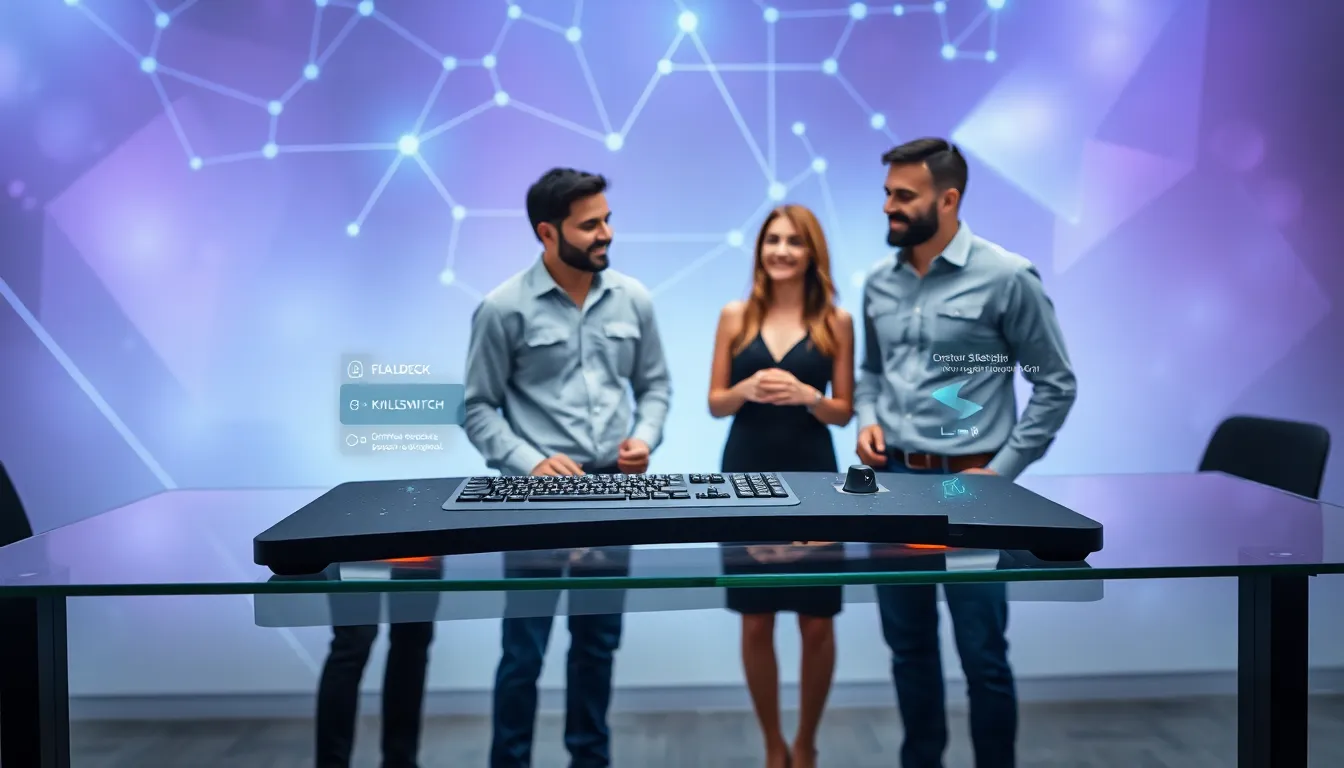Imagine effortlessly customizing your gaming experience while also ensuring unmatched performance with your Steam Deck. Enter the magical world of killswitch technology. Sounds intriguing, right? Whether he’s a casual gamer or she’s a hardcore enthusiast, everyone wants that edge. Let’s dive deeper into what killswitch technology is all about and how it can supercharge your gaming sessions.
Table of Contents
ToggleUnderstanding Killswitch Technology

Killswitch technology brings a revolution in how gaming devices function. Think of it as a safety valve for performance, it allows users to manage their hardware resources dynamically. The essence hinges on giving players control over how their device behaves under different conditions.
But how does it work? When a game demands heavy resources, killswitch technology can swiftly disable certain processes to redirect power where it matters most. This optimization helps in achieving smoother gameplay and longer battery life, which is a win-win for everyone.
In simpler terms, it’s akin to having a magic button that assures your Steam Deck performs at peak efficiency just when you need it. As portable gaming devices push boundaries, understanding this technology becomes crucial for gamers who crave flexibility and performance.
Benefits of Using Killswitch on Steam Deck
Integrating killswitch technology into the Steam Deck opens up a treasure trove of benefits. For starters, performance enhancement stands at the forefront. Users can enjoy increased frame rates without the irritating lag that sometimes plagues gaming experiences.
Another significant perk is battery conservation. Everyone knows that gaming can drain a battery faster than a kid running for ice cream on a hot day. Killswitch allows the device to selectively toggle off non-essential functions, extending playtime without compromising on the thrills.
Also, the technology supports thermal management. Overheating can become a real issue while gaming, killswitch technology helps mitigate this risk by adjusting resource allocation on-the-fly, keeping the system cooler. When combined, these benefits create a gaming experience that’s smoother, longer, and more enjoyable than ever.
Setting Up Killswitch on Your Steam Deck
Setting up killswitch on your Steam Deck doesn’t have to be a challenging job. Here’s a step-by-step guide to get you rolling:
- Download Relevant Software: First things first, grab the latest version of the software that includes killswitch functionality. This might come from the Steam store or official sources, be sure to double-check.
- Launch the Application: Open the software on your Steam Deck. You might be greeted with a friendly setup wizard. Who doesn’t love a wizard?
- Configure Settings: Once in the application, navigate to the settings menu. You’ll find options tailored for performance tweaks, battery management, and more.
- Test Performance: After configuring, launch your favorite game to see how the adjustments impact performance. Feel free to play around with different settings until you find your sweet spot.
This process can usually be completed in a few minutes, but the rewards reaped from successfully implementing killswitch will last long into your gaming marathon.
Remember that frequent updates may introduce new features, so keep an eye out for any patches or improvements.
Common Issues and Troubleshooting
While the integration of killswitch technology offers tremendous advantages, it’s not without its quirks. Occasionally, users encounter hiccups that can disrupt the seamless experience promises.
- Software Compatibility: Ensure that the killswitch software is compatible with your Steam Deck’s current version. Sometimes updates can create temporary incompatibilities. If something feels off, check the software’s release notes.
- Unexpected Shutdowns: If the Steam Deck shuts down unexpectedly, it might be due to aggressive power-saving features. Adjust these settings in the application to find a balance you’re comfortable with.
- Performance Lag: If gameplay stutters or lags, it could be beneficial to revisit the configuration. Experiment with settings to alleviate performance bottlenecks, ensuring the killswitch effectively enhances gaming sessions instead of hindering them.
Eventually, keeping the software up to date and being mindful of system configurations can help avert many common frustrations.
Should issues persist, consulting user forums or the official support page often yields helpful insights.
Best Practices for Optimizing Your Gaming Experience
Optimizing your gaming experience with killswitch technology can elevate your enjoyment to new heights. Here are some best practices to consider:
- Customize Your Settings: Every gamer has unique preferences. Experiment with various settings to dial in what works best for your style, whether that’s boosting graphics or prioritizing performance.
- Regularly Monitor System Performance: Use in-game metrics to keep an eye on frame rates and temperature. Observing these in real time can guide real-time adjustments.
- Stay Updated: The world of gaming software is ever-evolving. Regular software updates often include enhancements to killswitch functionality, ensuring you stay ahead of any potential issues.
- Engage with the Community: Sharing experiences and tips through forums helps build a community of informed gamers. This collaboration often unveils lesser-known tips that can refine experiences even further.
Being proactive about these factors enhances the overall experience while reducing potential headaches.
Future of Killswitch on Portable Gaming Devices
The future of killswitch technology holds remarkable potential for portable gaming devices. As gaming industry trends tilt towards enhancing user experience, expect further advancements on the horizon.
Imagine having an intelligent killswitch equipped with AI capabilities that learns from user behavior over time. This could take resource management to a whole new level, ensuring that each session is tailored to the player’s preferences. Also, leveraging cloud gaming technology, the killswitch might redistribute performance workloads based on internet speed, improving gameplay even during network fluctuations.
Also, future innovations may extend beyond just power and thermal management to include more intuitive interfaces and interactive feedback systems. Imagine a future where your device communicates its status real-time, providing insights on gameplay and performance. With the rapid pace of technological advancements, it’s safe to say that we’re just scratching the surface of what’s possible with killswitch technology.




